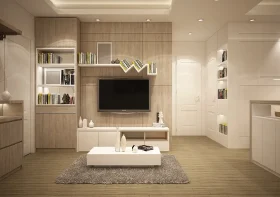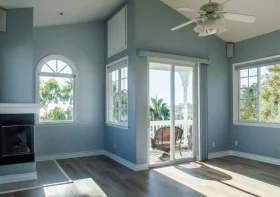How Roof Upgrades Can Improve Long-Term Comfort, Safety, and Energy Efficiency at Home

A roof isn’t just a capstone sitting atop your home. It is the primary line of defense against heat, cold, rain, wind, and time itself. Most homeowners don’t pay attention to their roofs until something goes wrong, a leak, a draft, or rising energy bills.
Yet waiting for a problem to surface means living through avoidable discomfort and repair costs. Roof upgrades, when approached thoughtfully, can lead to significant improvements in how a home functions and feels year-round.
From controlling internal temperatures to keeping the structure secure, a well-designed and well-maintained roof plays a critical role. The right upgrades not only impact immediate comfort but can shape the financial and physical condition of a home far into the future.
Contents
- 1 Upgraded Insulation for Greater Energy Savings and Indoor Comfort
- 2 Ventilation Systems That Protect Structural Integrity
- 3 Impact-Resistant Materials That Improve Safety
- 4 Solar Roofing and Reflective Coatings for Lower Energy Use
- 5 Noise Reduction and Weather Protection Through Better Materials
- 6 Longer Lifespan and Property Value Benefits
Upgraded Insulation for Greater Energy Savings and Indoor Comfort
One of the most overlooked but effective changes in roofing upgrades is insulation. When insulation is insufficient, warm air escapes during colder months and infiltrates during hotter ones. This exchange forces heating and cooling systems to work harder, driving up energy consumption.
When dealing with this issue, roofing contractors often recommend enhanced insulation materials that maintain a steady indoor climate. These upgrades reduce temperature fluctuations and contribute to better moisture control, making the home quieter and more consistent in its environment.
With improved insulation, homeowners notice fewer drafts, more predictable utility bills, and a reduction in the stress placed on HVAC systems.
Ventilation Systems That Protect Structural Integrity
Poor ventilation inside the roof space can lead to a host of long-term issues. Heat and humidity get trapped under the roof, gradually weakening wood, warping materials, and accelerating the aging of shingles. In cold climates, poor ventilation contributes to ice dam formation, which can cause water to back up under the roof covering and leak into the home.
Modern ventilation systems allow air to circulate properly, pulling out excess moisture and balancing attic temperatures. This helps preserve the structural integrity of the roof and reduces the risk of mold, mildew, and decay.
By installing ridge vents, soffit vents, or powered attic fans, homeowners can promote healthier airflow that benefits both the roof and the air quality inside.
Impact-Resistant Materials That Improve Safety
Roofs take a beating over time from hail, wind, falling debris, and sudden storms. Traditional shingles can crack or tear under these conditions, exposing the house to water intrusion and escalating damage. Choosing impact-resistant roofing materials offers a stronger line of protection.
These shingles or panels are designed to withstand severe weather conditions and minimize the damage caused by flying debris or hailstones. Investing in such materials not only shields the home but may also qualify homeowners for insurance discounts.
Reinforced roofing protects the entire building envelope and minimizes the risk of having to pay for emergency repairs after extreme weather events.
Solar Roofing and Reflective Coatings for Lower Energy Use
Modern roof upgrades increasingly incorporate solar technology and reflective finishes to improve energy efficiency. Solar roofing systems, whether panels or integrated shingles, allow the home to generate its electricity. This can significantly offset utility costs and contribute to a cleaner energy footprint.
In hot climates, reflective coatings help reduce heat absorption by bouncing sunlight away from the home. This keeps interior spaces cooler and lightens the burden on air conditioning systems. These upgrades serve dual purposes, lowering long-term utility costs and making the home less reliant on outside energy sources. With rising energy costs, these changes can add up to substantial savings over time.
Noise Reduction and Weather Protection Through Better Materials
Roofing isn’t only about temperature control; it also affects how sound travels through the home. Lightweight or aging roofing materials can let in noise from rain, wind, or nearby traffic. Upgrading to denser materials or adding soundproofing layers during roof replacement can noticeably cut down on outside noise.
This creates a more peaceful indoor setting, especially for bedrooms and living areas near the roofline. At the same time, better roofing materials create a stronger seal against wind-driven rain, snow, or dust.
New roof designs are engineered to withstand regional climate patterns, offering improved shielding from the elements and reducing the need for maintenance after heavy storms.
Longer Lifespan and Property Value Benefits
A new or upgraded roof doesn’t just protect; it can also raise the value of a home. Modern materials like architectural shingles or metal roofing offer extended lifespans, often reaching 30 to 50 years or more with proper care. This longevity means fewer replacements over the life of the home, making it a cost-effective investment.
A durable, well-installed roof improves curb appeal and makes a strong impression on prospective buyers. It signals a home that has been cared for and is less likely to present hidden maintenance issues.
Upgraded roofing can also be a negotiating asset during resale, giving sellers more leverage and faster closing times. For homeowners planning to stay put, the peace of mind and reduced maintenance burden offer equally strong incentives.
Roof upgrades deliver more than surface-level benefits. They improve how a home functions in terms of comfort, energy efficiency, and structural protection. When done thoughtfully, the roof becomes not just a shield from the outside world, but a silent partner in keeping the home running more smoothly, safely, and economically year after year.



